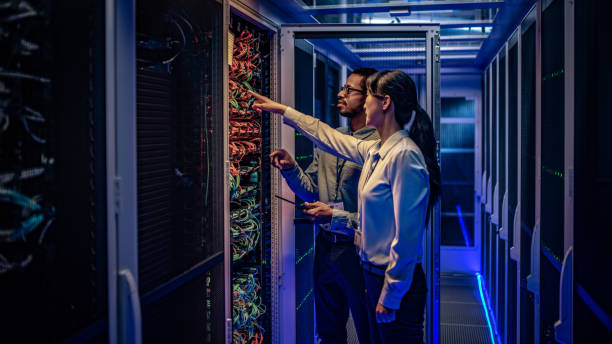In recent years, London has emerged as a global leader in the adoption of cutting-edge technologies to enhance professional security. The dynamic nature of security threats, ranging from terrorism to cyber-attacks, necessitates innovative approaches to ensure the safety of the city’s inhabitants and infrastructure. The integration of advanced technology in security operations has significantly transformed the landscape of professional security in London, making it more efficient, responsive, and adaptive to emerging threats.
Surveillance and Monitoring
One of the most visible impacts of technology on professional security in London is the widespread use of surveillance systems. The city is known for its extensive network of closed-circuit television (CCTV) cameras. These cameras are equipped with high-definition imaging, night vision, and even facial recognition capabilities. The deployment of such advanced surveillance technology has enabled security professionals to monitor public spaces continuously, detect suspicious activities, and respond promptly to potential threats.
In addition to traditional CCTV systems, London has embraced the use of drones for aerial surveillance. Drones equipped with high-resolution cameras and thermal imaging can cover vast areas quickly, providing real-time data to security personnel. This technology is particularly useful during large public events, protests, or emergencies, where ground access might be limited or unsafe.
Cybersecurity Measures
As the digital footprint of individuals and organizations continues to grow, cybersecurity has become a critical component of professional security in London. Cyber-attacks can have devastating consequences, from compromising personal data to disrupting critical infrastructure. To counter these threats, London has invested heavily in advanced cybersecurity measures.
Artificial intelligence (AI) and machine learning (ML) are at the forefront of cybersecurity innovations. These technologies can analyze vast amounts of data to identify patterns and anomalies that might indicate a cyber-attack. For instance, AI-powered systems can detect unusual network traffic or unauthorized access attempts, enabling security teams to respond swiftly and mitigate potential damage.
Moreover, London has established several cybersecurity centers that focus on research, development, and implementation of cutting-edge security technologies. These centers collaborate with international experts and institutions to stay ahead of evolving cyber threats. The city’s proactive approach to cybersecurity ensures that both public and private sectors are well-protected against digital threats.
Access Control and Identification
Modern access control systems have revolutionized the way security is managed in London. Traditional keys and locks are being replaced by biometric systems, smart cards, and mobile access solutions. Biometric systems, such as fingerprint and iris scanners, provide a higher level of security by ensuring that only authorized individuals can access restricted areas.
Smart cards and mobile access solutions offer convenience and flexibility while maintaining robust security standards. These systems can be integrated with other security technologies, such as surveillance cameras and alarm systems, to create a comprehensive security network. For instance, if an unauthorized person attempts to access a secure area, the system can automatically alert security personnel and trigger an appropriate response.
In addition to physical access control, technology has enhanced identity verification processes. Facial recognition technology is increasingly being used at airports, train stations, and other critical infrastructure to verify the identities of travelers and employees. This technology not only speeds up the verification process but also enhances security by reducing the risk of identity fraud.
Emergency Response and Management
Effective emergency response is crucial in ensuring the safety of London’s residents and visitors. Technology has played a significant role in improving emergency response and management capabilities. Advanced communication systems, such as encrypted radios and mobile apps, enable seamless communication between security personnel, emergency responders, and command centers.
Geospatial technology, including Geographic Information Systems (GIS) and Global Positioning Systems (GPS), provides real-time data on the location of assets, personnel, and incidents. This information is invaluable during emergencies, allowing responders to coordinate their efforts more effectively and make informed decisions.
Furthermore, technology has facilitated the development of sophisticated emergency management platforms. These platforms integrate data from various sources, such as weather forecasts, traffic reports, and social media, to provide a comprehensive view of the situation. Security professionals can use this information to predict potential threats, plan responses, and allocate resources efficiently.
Training and Simulation
The use of technology in training and simulation has significantly enhanced the preparedness of security professionals in London. Virtual reality (VR) and augmented reality (AR) technologies are being used to create realistic training scenarios. These immersive environments allow security personnel to practice their skills and respond to simulated threats in a safe and controlled setting.
Simulation-based training is particularly valuable for preparing for high-risk situations, such as terrorist attacks or natural disasters. By replicating real-world conditions, these training programs help security professionals develop the skills and confidence needed to handle emergencies effectively.
Conclusion
The integration of advanced technology in professional security has transformed the way security is managed in London. From surveillance and monitoring to cybersecurity, access control, emergency response, and training, technology has enhanced the efficiency, responsiveness, and adaptability of security operations. As security threats continue to evolve, London remains at the forefront of technological innovation, ensuring the safety and security of its residents and visitors. The city’s commitment to leveraging cutting-edge technologies serves as a model for other global cities striving to enhance their security measures in an increasingly complex and interconnected world.

